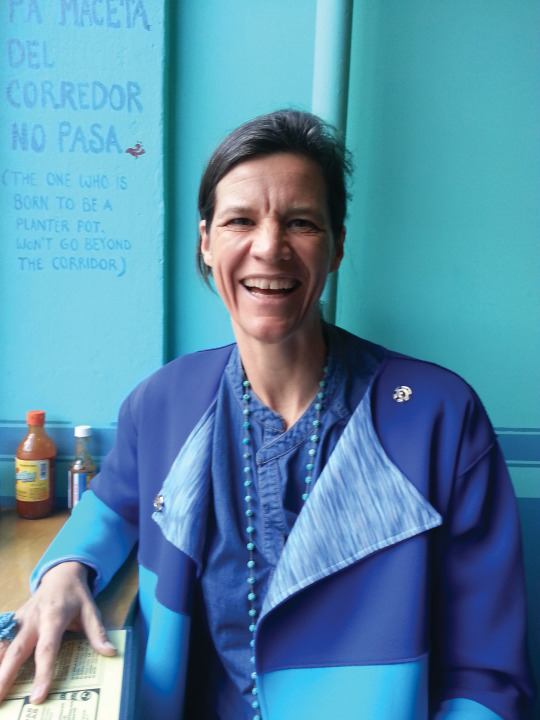
An Interview with Director and Cinematographer, Kirsten Johnson
Kirsten Johnson is a documentary film director, producer, and cinematographer whose credits include Citizenfour, Trapped, The Invisible War, Darfur Now, and Fahrenheit 9/11. In her new film, Cameraperson, she weaves together unused footage from her work as a cinematographer with her own home movies, creating a cohesive narrative about memory, trauma, representation, and the power of images and human connection.
Johnson (or KJ, as she’s known) elevates these remnants of previous films—including footage of survivors of the Bosnian genocide picking blueberries after returning to their home, a lawyer displaying the chains that white supremacists used to drag James Byrd to his death, and a midwife in a Nigerian maternity ward attempting to revive a dying newborn—and intersperses them with scenes of her mother, diagnosed with Alzheimer’s, receding into an unknown space. KJ only appears on camera once, but her presence behind the camera is unmistakable.
KJ and I met a few days after a Cameraperson screening at a film festival, and we talked for a little over an hour about how she approaches her craft and the dilemmas she faces as a cinematographer—and as a human being.
—Stephanie Palumbo
I. I’M SEEING YOU NOW
THE BELIEVER: You’ve said the camera brings you closer to people. What does that mean?
KIRSTEN JOHNSON: For me, the camera allows. It allows me into someone’s home, into their intimacy. I filmed testimony of Holocaust survivors for the Shoah Foundation, and I remember going to this woman’s house in Brooklyn. She had this amazing photo of herself from when she was a little kid, where she was wearing a fez on her head with a fake chocolate cigarette in her mouth. You could see the most beautiful little life in the photo, and I got to be close up to film it, enter into her eyes, and be in her pre-Holocaust childhood. And then the same woman—we were filming and smelled something burning, and she was like, “Oh, I’m cooking my lunch.” So I go into her kitchen, and there’s this funny little metal bowl that’s cooking slowly on the stove, and I was like, “What is this bowl?” And she was embarrassed about it. It was her bowl from the camp. And it was what she makes all of her food for herself in. That tells you something about what the Holocaust was.
So there’s that level of intimacy, and then being allowed into a space like a prison or someone’s place of worship or a factory—places you don’t get to go otherwise, but you show up with a camera and...
You have reached your article limit
Sign up for a digital subscription and continue reading all new issues, plus our entire archives, for just $1.50/month.
Already a subscriber? Sign in




